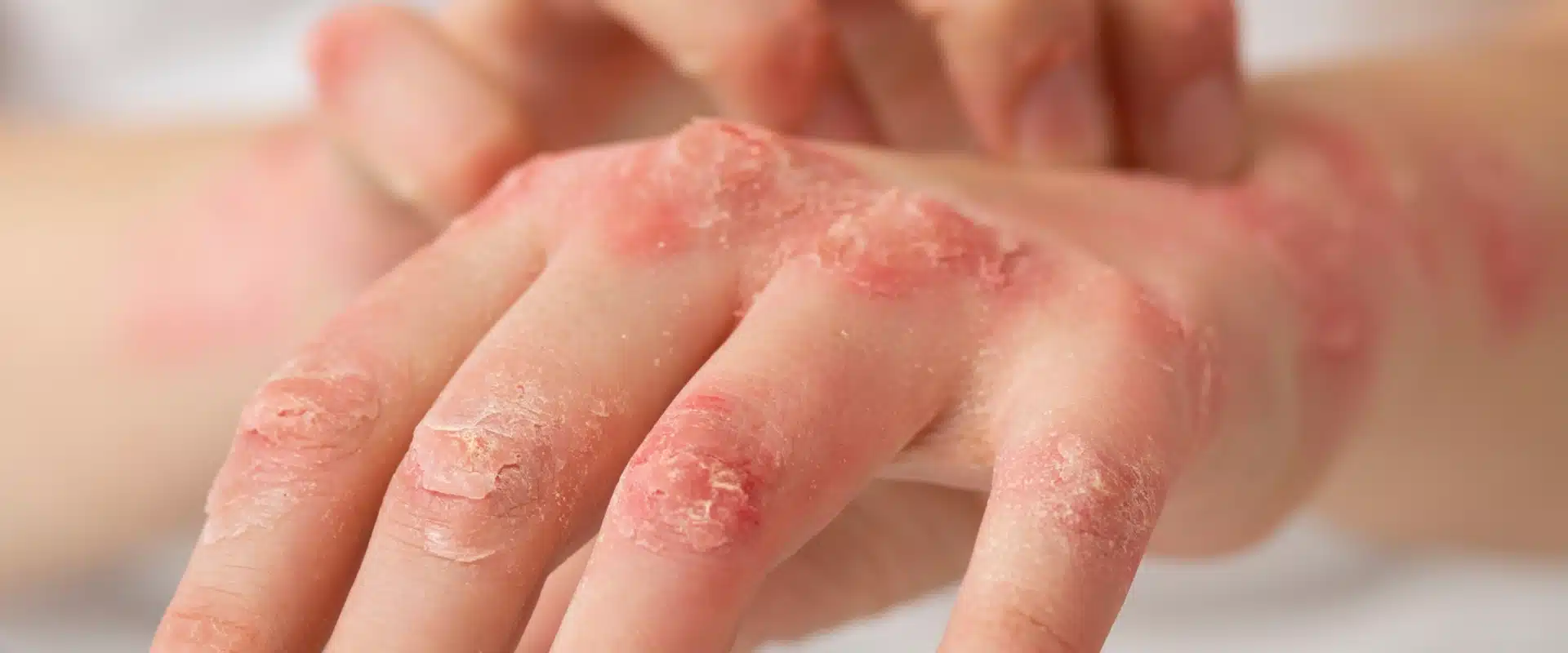Skin is one of the vital organs and a protective barrier that reflects the general health conditions in humans. Both intrinsic andextrinsic factors contribute to causin g skin rashes. A skin rash occurs when the texture of your skin changes and is bumpy and inflamed. Rashes are skin lesions or marks that can vary in appearance, ranging from red, pink, or purple to flat or raised. The appearance of rashes can differ depending on skin tone. Some skin rashes are painful and cause blisters, while some are dry and itchy. Rashes can be classified as acute (short-lived), chronic (lasting more than a week or two), or recurring (appearing intermittently). Various rashes can occur for different reasons, such as allergic reactions, immune system problems, exposure to certain plants, and infections. Many rashes have similar appearances, making it crucial to have them examined by a dermatologist each time for proper diagnosis and treatment.
Types of Skin Rashes
Allergic Contact Rashes:
Allergic contact dermatitis occurs by reacting to allergens that come into contact with your skin. In older individuals, these allergens cause tiny red blisters and itching. Chronic exposure to contact allergens makes the skin scaly, red, and thick. It can be challenging to distinguish allergic contact dermatitis from other rashes.
Eczema (Atopic Dermatitis):
Atopic dermatitis is the most common type of eczema and is sometimes described as “the itch that rashes.” It is a condition that causes red, dry, itchy patches of skin that may crust and weep fluid. It can be widespread or mild, causing a few patches of affected skin. The itching tends to be more intense at night. Another similar condition is nummular eczema, an inflammatory skin condition that causes an itchy, red, circular rash.
Hives (Urticaria):
Urticaria are localized, pale, itchy, pink swellings that may occur individually or in groups. Sometimes, finding the cause is impossible, but allergic reactions, medications, and food chemicals may cause hives. Antihistamines are often prescribed for relief and are most effective if taken regularly to prevent hives formation. the skin.
Perioral Dermatitis:
Perioral dermatitis is a rash that resembles acne and typically appears around the mouth. Steroid creams, cosmetics, and other personal hygiene products promote perioral dermatitis. It occurs in later ages, women.
Pityriasis Rosea:
Pityriasis rosea typically begins with circular or oval raised patches on the abdomen, back, or chest.
Dermatologists often prescribe oral histamines or exposure to sunlight or ultraviolet B.
Poison Ivy, Sumac, and Oak:
Poisonous plant rashes are typically red streaks, small bumps, itchy skin, and blisters filled with fluid
that may leak out. It commonly occurs in people who spend a lot of time outdoors. One tiny drop of
toxic oil in oak, ivy, and sumac can cause a rash. unpleasant cysts may require medical care.
Pruritus:
Pruritus is an itch that makes a person want to scratch. It can cause anxiety, depression, discomfort,
sleeplessness, and frustration. Internal conditions like hepatitis, iron deficiency, and kidney failure may
cause pruritus.
Psoriasis:
Psoriasis is a serious condition in which extra skin cells create a layer on the skin with patches of scaly, itchy white skin. It is an inherited condition and can be stimulated by stimulants like stress, cuts, scratches, or sunburns.
Rheumatoid Arthritis Rash:
Rheumatoid arthritis is typically linked with joint pain, but as an autoimmune inflammatory disorder, it can impact the whole body. Inflammation of the blood vessels leads to rashes and other skin problems.
Scabies:
A tiny mite causes scabies. Within several weeks, the patient develops an allergic reaction causing severe itching, little red bumps, or pimples.
Seborrheic Dermatitis:
Seborrheic dermatitis is an inflammatory skin condition with patches on skin that can be red, scaly,
itchy, and flaky. In older, it affects the scalp and causes dandruff.
Syphilis Rash:
Syphilis rash is caused by a bacterial infection and a sexually transmitted disease. A rash may develop on one or more areas of the body; most often, brownish spots appear at the palms of hands or on the soles of the feet.
Conclusion:
Maintaining skin rashes is not only about maintaining a youthful appearance; it’s also crucial for
keeping the skin functionally healthy and resilient to the effects of natural aging and environmental
stressors.
At OnSite Dermatology, we understand the unique challenges that seniors face regarding their skin, and we are committed to providing expert care and advice tailored to their unique needs. We offer essential skin cancer screenings, treatments, and professional medical care without needing transportation, making it convenient and accessible for older adults to maintain healthy skin, especially in community centers and retirement homes. For more information or to schedule a consultation, fill in the form below or give us a call on (877) 345-5300.

